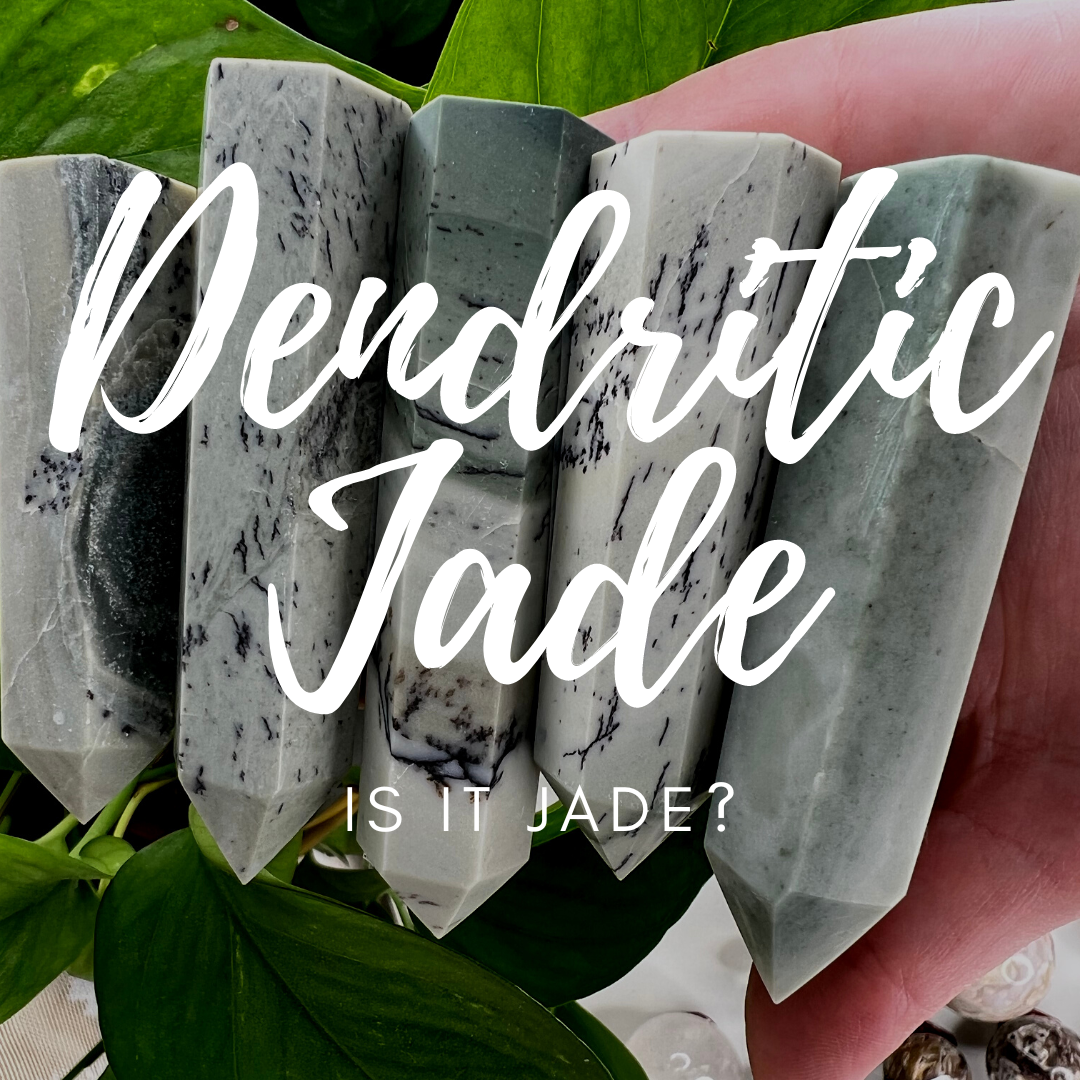
Dendritic Jade, is it Jade?
Share
Is it Jade?
I have started seeing a green specimen carved into a tower shape on Instagram and Tiktok that people are calling Dendritic Jade. I could tell by the price that it wasn't Jade, but I was so curious as to what it was. One of my suppliers happen to find some and I was able to buy some off of her to test. Her hypothesis was that it was some kind of serpentine with dendritic inclusions. I decided to figure out once and for all what it really was by having it tested in a lab.
This is the specimen in question, it is a pale green color, with dendritic inclusions. Dendritic inclusions are the plant like looking inclusions on the crystal, although they are not plant matter, they just look like they are.
I showed the video of them on Tiktok and had a few people guess, and some people even thought it might be fake and not a crystal at all. I could tell by holding it that it did feel like a real crystal.
Here is a picture of the specimen:


Now let's see the RESULTS:
Analytical Result Report
Sample id: 9711 (gray tower)
Operating conditions: An AmRAY 1830 SEM was used in the study and operated under the following conditions: Acceleration potential of 25 kV, 24 mm working distance, 15 degrees sample tilt, coated with 250 Å carbon. Using the X-ray fluorescence attachment with 35 kV potental in conjunction with the EDS system.

Fig. 1: Photographs of the specimens. Approximately 8.5 cm maximum dimension.

Fig. 2: Backscattered electron images of specimen D.

Fig. 3: Energy dispersive spectrum of spot 1 shown in Fig. 2 (pyroxene, enstatite with minor wollastonite contribution)

Fig. 3: Energy dispersive spectrum of spot 2 shown in Fig. 2.
Table 1: Trace and minor element composition of the specimen. (in wt. %)
|
element |
|
|
Aluminum |
0.45 |
|
Calcium |
2.66 |
|
Iron |
0.45 |
|
Manganese |
0.30 |
|
Potassium |
0.10 |
|
Titanium |
0.004 |
Summary of findings: The specimen (Fig. 1) is very interesting! Compositionally, it is a magnesium silicate with minor calcium content and low iron content (Figs. 2 and 3, Table 1). Essentially, it is a pyroxene with dominant enstatite component and lesser wollastonite component. The dark specks are phlogopite (Figs. 1,2 and 4). This is not a typical carving material. Serpentine which is chemically similar but has lower silica is commonly used for that but this is harder and compositionally fits with the pyroxenes.
What does it mean?
Essentially it is NOT Jade, it is NOT Serpentine, and it is NOT Jadeite. I imagine the person who gave it the trade name of Dendritic Jade perhaps thought it was a Jadeite, which was not a terrible guess as Jadeites are a Pyroxene mineral, but Jadeite has a different chemical formula than this specimen, it was closest to serpentine chemically. Pyroxene minerals are generally quite abundant and are the majority of them are not typically carving material.
I think someone found this specimen with the cool dendritic inclusions and thought it was Jadeite with dendritic inclusions and decided to call it Dendritic Jade, but Jade and Jadeite it is not.